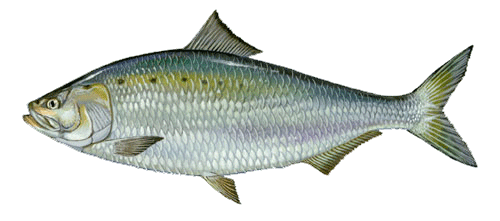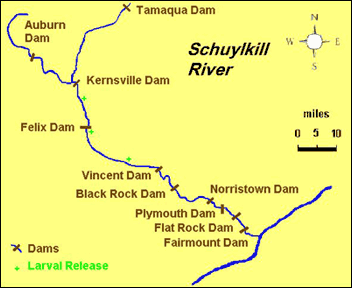
Image: Maryland Department of Natural Resources
During a recent community-level fishery survey, Pennsylvania Fish and Boat Commission biologists encountered an American shad nearly 37 miles upriver in the Schuylkill, marking the first time that shad has been spotted above Norristown since 1820. That year, the Fairmount Dam was constructed, prohibiting shad—which are native to the Schuylkill and its tributaries—from ascending the river during their annual spring spawning run.
Restoring the shad population in Pennsylvania’s rivers is what led to the formation of the PA Fish and Boat Commission in 1866, and the agency has since worked to remove dams that block shad and other fish from migrating. A total of 10 dams in the Schuylkill have either been removed or now have fishways that allow fish to pass through; many of these restoration projects were completed in the last five years.

Image: PA Fish and Boat Commission
While the shad sighting just below Black Rock Dam (see map above) is a measure of success for the fishways, PWD biologist Lance Butler also notes that “the resurgence of shad is an indicator of returning ecology to Schuylkill.” Shad populations decimated by pollution in the early 20th century began making a comeback in the Schuylkill in the 1980s, returning the “founding fish” (a whopper of a fish tale claims American shad from the Schuylkill River saved George Washington and his troops from starvation during the Revolutionary War) to its native waters.
Though the April-June shad migration is now over, see what other species you can spot ascending the Fairmount Dam’s fish ladder via the Fish Cam.